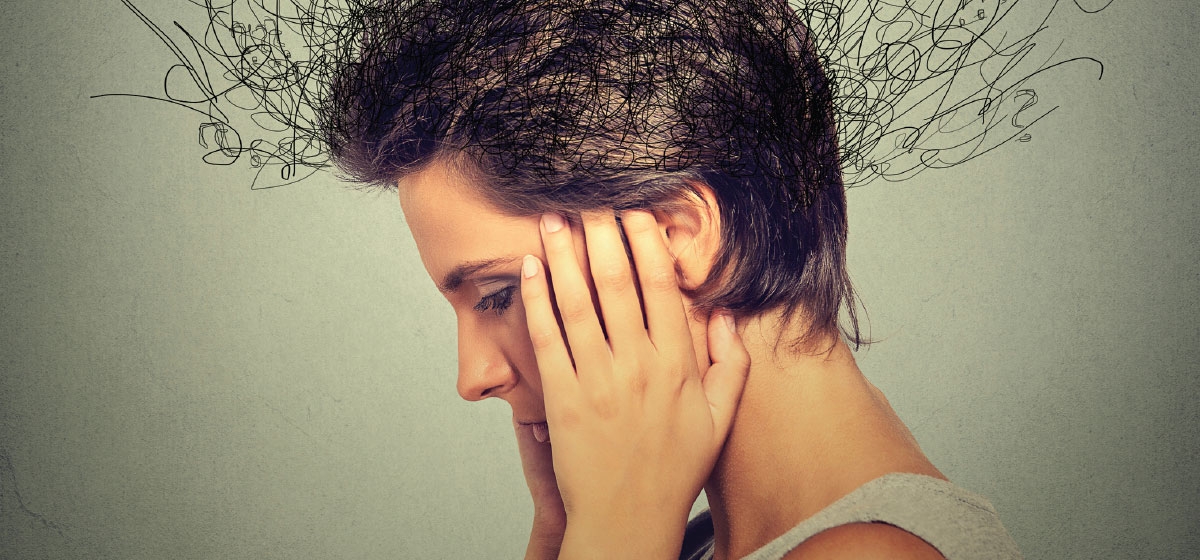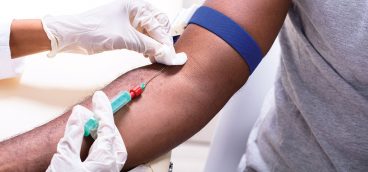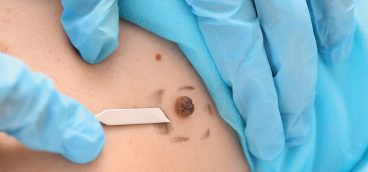
Emily is an emergency dispatcher, yet work is the only place where she always feels calm. Sometimes, when Emily (not her real name) walks her dog on the sidewalks of her Pittsburgh neighborhood or gets ready to leave her home to run errands, she feels a spell of dizziness. Then comes shortness of breath. After that, a spacy, hallucinatory feeling. “It will seem like there is nothing real to me,” she says, “like everything is in a dream.” Then imbalance, paralysis and a clamming up that makes it difficult for her to communicate with anyone, even her husband.
Her condition is panic disorder, and it’s marked by recurrent, unpredictable panic attacks and a lingering undercurrent of anxiety about future attacks.
The episodes started when she was 12. They were initially misdiagnosed as migraines. She says her teen years were difficult. The medication Paxil caused her to gain weight and become even more moody and socially withdrawn. Through the years, talk therapy has helped “to a degree.”
Now, at the age of 32, Emily has the stability of a career and a husband, but still lives in fear of the attacks. She feels a sense of wooziness when she exits a familiar place, like her home or the dispatch center, and enters the chaotic larger world.
Her work allows her to plug in an earpiece and channel some of that worry into situations where worry makes sense, coordinating medics to crime scenes and car accidents. The dispatch center is “the one place where I’ve never had [an attack],” she says. “I don’t have time. You can’t think about anything else besides the work.”
Home hasn’t been as peaceful. Her husband wants to travel more, but Emily fears airplanes and highways. Day trips to nearby casinos on state routes are the best she can do. It has caused a strain on her marriage. When she vetoes plans to avoid triggers, her husband tells her she’s being “a bit dramatic” and then he withdraws.
Last January, Emily saw a Facebook ad for a pilot program offering a new treatment for panic attacks. Allegheny Health Network was offering a free four-week trial of a breathing tool called Freespira. At an impasse with her condition, she clicked on it.
This is how Emily found herself in a conference room at AHN’s North Side headquarters, a clear plastic nasal cannula stretched across her lower lip, staring into a tablet computer and trying to breathe at the pace of a series of beeps. The Freespira device, about the size of a dinner roll, was the conduit between the breathing tube and the computer.
An AHN nurse helped guide her through the process, which took 17 minutes, but there really wasn’t much to clarify. The Freespira system explained itself via the tablet computer. It told Emily to close her eyes and breathe normally for the first part of the session. Then it gave her a series of tones to follow, breathing in as the 8-bit video game-like sound escalated and exhaling as it dropped. Two graphs, like rising and falling Etch-a- Sketch mountain ranges, were on display. One charted Emily’s breath and the other the goal breathing rate. During the final part of the session, the program asked Emily to breathe along only using the graph; no sounds to follow.
Emily took the setup home that day for a four-week trial. Each day, the Freespira guided her breathing, slowing down her pace as the weeks progressed. She says she hasn’t had an attack since she returned the device to AHN.
Utilizing both personal technology and knowledge about panic attacks that did not exist 12 years ago, Freespira has had promising results for Emily and the 6 million other Americans who suffer from panic disorder, and might have even better implications for health insurance networks, for whom panic disorder is one of the most expensive and frustrating conditions to treat. Panic attacks can cause financial spillovers when patients wind up in emergency room with symptoms doctors might mistake as signs of a heart attack, and conventional mental health approaches have had mixed results.
Freespira utilizes a technique developed in the mid-2000s, primarily at Stanford University. Researchers believed that panic attacks create a state of constant hyperventilation. The strained breaths don’t deliver as much oxygen as deliberately paced breathing, inducing the body’s fight-or-flight mechanism and reinforcing the panic response. And panic sufferers breathe differently, more shallowly, even when not in the midst of an attack. The Stanford researchers developed a protocol called CART, capnometry-assisted respiratory training, to teach patients to normalize their air intake, learning to escape the cycle.
In the first study of CART, published in a 2008 issue of the Journal of Psychiatric Research, 40 percent of subjects were free of panic attacks during the fourweek training period. At the two-month follow-up, 62 percent had not had an attack since the training. In a period between two and 12 months after the CART training, 68 percent were free of attacks. Note that, after the four-week trial, patients were not continuing to train. They had merely reset their breathing habits.
Freespira is basically a computer program that teaches CART in a home setting. It was developed by Palo Alto Health Sciences, a firm created to commercialize the CART technique and approved by the federal Food and Drug Administration in 2013.
Promising clinical trials and FDA approval are not the only gates between a treatment and its intended beneficiaries. Insurance companies can be hesitant about new treatments. “It’s just a process we expect to go through,” says Greg Tomita, vice president of marketing for Palo Alto Health Sciences. “It will take a few years.”
Allegheny Health Network has a program to try out just such new technologies and recent medical innovations. Named VITAL, the program has connected patients with new treatments for everything from peripheral artery disease to acid reflux. A VITAL pilot program does not test a treatment’s clinical effectiveness, notes Dr. Alan J. Russell, AHN’s chief innovation officer and executive vice president. “That’s already been tested before we get to it.” It tests the financial feasibility of AHN offering the treatment.
When he heard about Freespira, Russell said it sounded like a winwin- win: “It’s noninvasive, requires no medication, and I’m pretty impressed by the patient response.”
There are incentives for a group like AHN to seek out a new treatment for panic disorder, in particular. While exact figures on the costs to treat mental health conditions are difficult to pin down, it is known in the medical field that panic attacks cost insurers a lot of money—much of which is spent on treatments that have unimpressive success rates.
“It’s noninvasive, requires no medication, and I’m pretty impressed by the patient response.”
—Dr. Alan J. Russell, Allegheny Health Network’s chief innovation officer on Freespira
In 2005, researchers compiling the American Psychiatric Association’s latest Diagnostic and Statistical Manual found that medication fosters some improvement for panic disorder patients in 70 to 90 percent of cases. But it’s difficult to keep patients on medication, due to side effects and changes in access to meds; 84 percent of panic disorder patients discontinue antidepressants within 90 days, and only 30 to 45 percent of these patients remain well after quitting their meds.
Also, benzodiazepines, the sedatives commonly prescribed for anxiety, have abuse potential and are rising more quickly than opiates as a factor in overdose deaths. In 1999, the sedatives were present in 1,135 OD fatalities. In 2014, they were present in just south of 8,000.
As for talk therapy, “Cognitive behavioral therapy (CBT) remains the gold standard” for panic disorder, according to Russell. CBT therapists use a variety of methods to examine and alter the patient’s thought process. According to a 2006 British Medical Journal study, 41 percent of patients reported being free of panic attacks after 12 months of CBT.
However, “Most therapists aren’t trained to do cognitive behavioral therapy,” says Dr. Anthony Mannarino, chairman of the Department of Psychiatry of Allegheny General Hospital, an AHN facility. Unless a patient searches out a cognitive behavioral therapist (which requires a degree of knowledge of psychologist styles rare in the general population), he or she probably isn’t going to find one. “The result is most therapists [treating panic disorder] just do supportive therapy,” says Mannarino. While a well-trained supportive ear can help anyone with a mental health disorder, Mannarino says panic attacks are a particular kind of psychiatric disorder that might not decrease with generalized treatment, as insurers continue to shell out for weekly therapy sessions.
The most expensive aspect of panic disorder, from an insurer’s standpoint, is the tendency of sufferers to wind up in emergency rooms. If a person arrives at the ER with the myriad of physical symptoms that can accompany a panic attack—shortness of breath, rapid heartbeat, etc.—the staff will usually implement a series of tests for other conditions with those symptoms—and quickly, without thought to cost. It’s how emergency medicine works, Mannarino says; doctors and nurses think in terms of worst-case scenarios. An expensive troubleshooting process commences.
The National Institute of Mental Health’s most recent attempt to tally the cost of repeated use of emergency services for relief from anxiety disorders, compiled in 1999, put the figure at $22.8 billion. That’s $32.7 billion in 2016 dollars.
Palo Alto is currently charging insurers $499 a month to rent a Freespira unit, a small price to curb the financial chaos of stop-start treatments and ER visits that come with panic disorder. Russell, chair of AHN’s VITAL program, says he’s still reviewing the results of AHN’s pilot program, which introduced 100 patients to Freepsira treatment, but he says he’s been impressed so far.
“It’s so much faster than other treatments and it’s a non-medicine,” he says. “It’s priceless. [Many patients] have tried so many medications and have been in therapy for years. This gives them a sense of control.”
Three months after Freespira breath training, Emily hasn’t suffered a panic attack. She is cautiously optimistic. She and her husband haven’t made any travel plans, but she no longer gets a spike of discomfort when she crosses the thresholds of home or work. In fact, she doesn’t think about that transition from familiar settings to the outside world anymore. And that’s a start.




